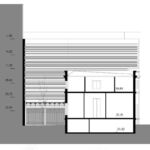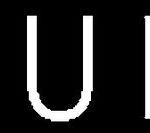Coaco: A Unique Architectural Endeavor by Zum
Project's Summary
Coaco stands as a testament to modern architecture, ingeniously designed by the renowned firm, zum. This project embodies the essence of contemporary design while respecting its historical context. The building is conceived as if sculpted by the gentle touch of a hand in the sand, creating an organic form that seeks to integrate seamlessly with its surroundings. The architecture challenges the conventional notions of space, as it navigates the delicate balance between the existing structures and the new additions.

The design philosophy behind Coaco emphasizes the importance of contrast. The limitations imposed by the site of the historic palacete have led to a creative solution, resulting in a unique volume that fosters a dynamic relationship between the past and the present. By preserving the hierarchy and elements that represent the memory of previous interventions, the project allows for a narrative that reflects the evolution of the space over time. Each alteration and addition to the structure serves as a reminder of its storied history, while paving the way for modern usage.

Occupying seven floors, including a basement level, Coaco is designed to serve both the professional community and the public. The ground level hosts essential services such as a library and spaces for outdoor and institutional activities, creating an inclusive environment for all users. In contrast, the existing building houses the financial and managerial functions, ensuring a logical distribution of purposes within the complex. This thoughtful arrangement highlights the project’s commitment to community engagement and functionality.

The central courtyard of Coaco remains intact, further enhanced by a luminous wall that defines its boundaries. This space acts as a natural extension of the interior, functioning as a grand vestibule that can be utilized for various events, both day and night. The design not only prioritizes aesthetic appeal but also considers practicality and versatility, making it an ideal venue for ephemeral gatherings. The interplay of light and space within the courtyard contributes to the overall ambiance of the building.

To unify the façade and enhance the visual experience, the chosen exterior cladding material is glass mosaic. This innovative choice not only reflects light beautifully but also adds a layer of texture and color that complements the surrounding environment. The interplay of glass and light transforms Coaco into a beacon of modern architecture, inviting exploration and engagement. With its striking design and thoughtful integration into the landscape, Coaco by zum promises to be a landmark project that captures the spirit of innovation and collaboration in architecture.
Read also about the House in Barvikha - Luxurious Architecture by Baharev and Partners project






